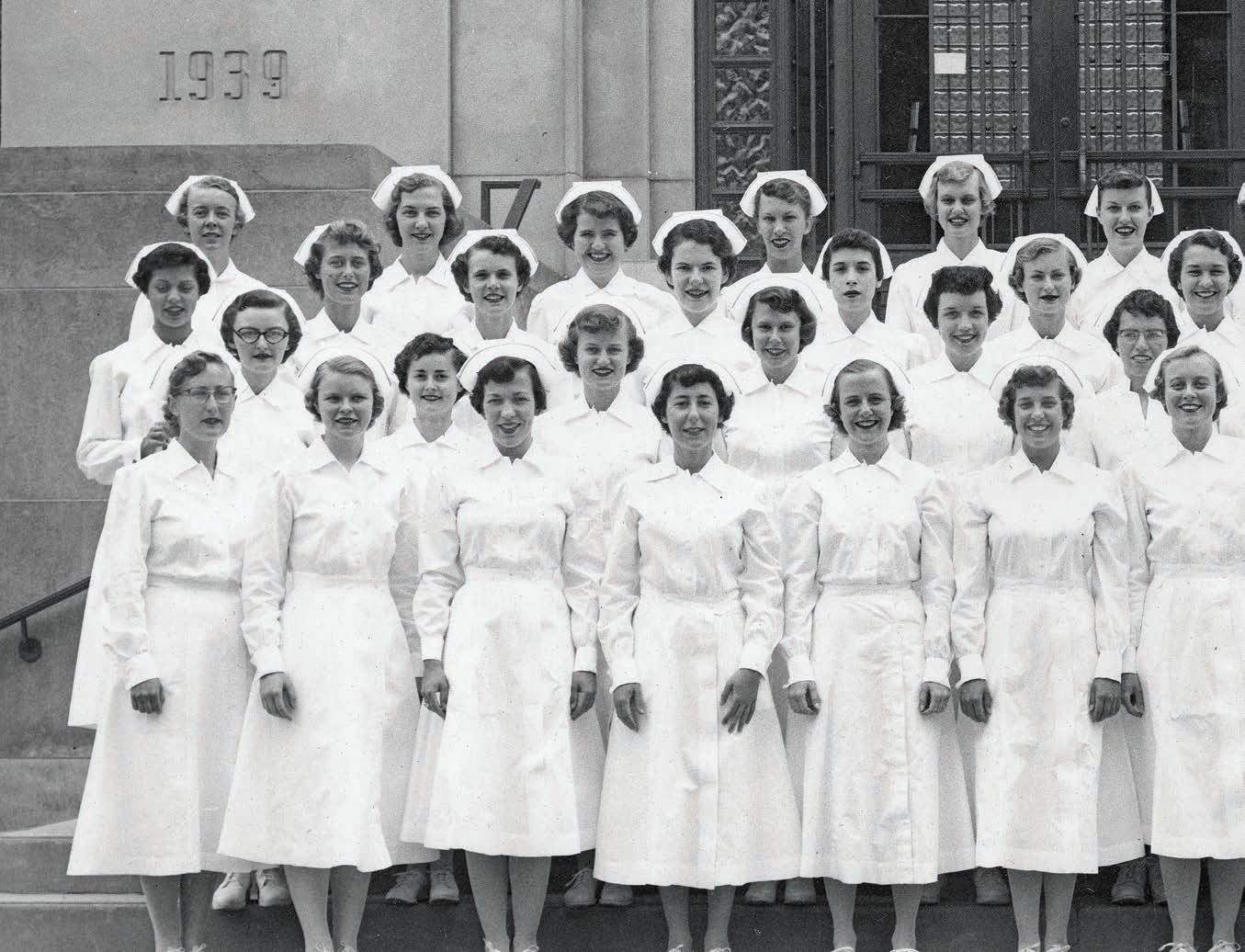
4 minute read
M Dentistry - Spring 2025
Dental Hygiene 70 Years Ago
A Class of 1955 dental hygienist reflects on her education and how oral health has changed in patients over the years.
It was 1953 when I began my bachelor’s degree in dental hygiene education in the University of Michigan School of Dentistry. Our director, Dr. Dorothy Hard, was a formidable person, and when she walked into a room everyone automatically stood up. To say Dr. Hard ran the program like a military school could not be repudiated. As a result, my friends were Joanne McDonald and Betty Meagher, who bookended me as we carried on in alphabetical order, quite naturally.
Dr. Hard had one acceptable standard – hers. The pointed edges of our Bunting instruments (invented by Dr. Russell Bunting, a faculty member and former Dean who was also Dr. Hard’s husband) always pointed towards the hard tissue of the tooth as we worked using a fulcrum/rest finger. After polishing and flossing we dried every millimeter of the tooth as we re-checked it. Dr. Hard believed only a dry surface could be examined thoroughly. I do agree.
We worked standing up without masks or gloves. Our long sleeved white cotton uniforms were starched and ironed. We also wore white stockings, shoes and caps with the lavender stripes. It was a great day when scrubs were introduced.
Dr. Albert Richards taught roentgenography, as he insisted we refer to his class. He had no patience for any overlapped or blurred interproximals. And we, of course, developed our own X-rays in those dark little closets.
As there were only two schools educating dental hygienists in Michigan, we were in demand and salaries were at a premium. It was said that the two highest paid starting salaries upon graduation in 1955 were electrical engineers and dental hygienists, though the salaries of engineers were not stagnant as were ours. A typical starting salary for a hygienist was around $85-$100 a week. That doesn’t sound like much, but the average salary of a male in 1955 was $67.
Tuition was $90 a semester and 35 cents would buy you a hamburger, fries and a Coke at McDonald’s. You could get a lobster dinner at the Beverly Hills Hotel for $3.25 and add the cheesecake for 50 cents. $100 a week went a long way.
As most of us went into dental practices as the first hygienists, we were introducing dental hygienists to our patients. Sometimes there was some resistance by a patient who was not accustomed to having anyone but their dentist peering into their mouth. Resistance to having hygienists treating a patient was quickly broken down in the field of dentistry. In 1955, teeth stained by tobacco from cigarettes, cigars or pipes were common. Also, because having one’s teeth cleaned was not a regular 6- to 9-month occurrence, the buildup of tartar (calculus) and plaque was the norm. The mouths of patients were not what we see today. Missing teeth, bleeding gums, amalgam fillings, bridges and removable partials were common, especially in male athletes before mouth guards. Those flippers with their front teeth were often seen on the trays where we kept our instruments. One would sometimes have to hold a wobbly tooth in place while scaling.
Since it was the time that Dr. Philip Jay and others were just introducing fluoride, decaying teeth were also prevalent.
Teaching the concept of daily flossing was foreign to many patients. We didn’t have the flossing aids of today, so wrapping the floss around those ring fingers, etc. was probably a lesson that fell on deaf ears for many patients.
The field of dental hygiene and dental health has come a long way as reflected in the beautiful smiles of adults today. Good work ladies, and gentlemen. Carry on.










